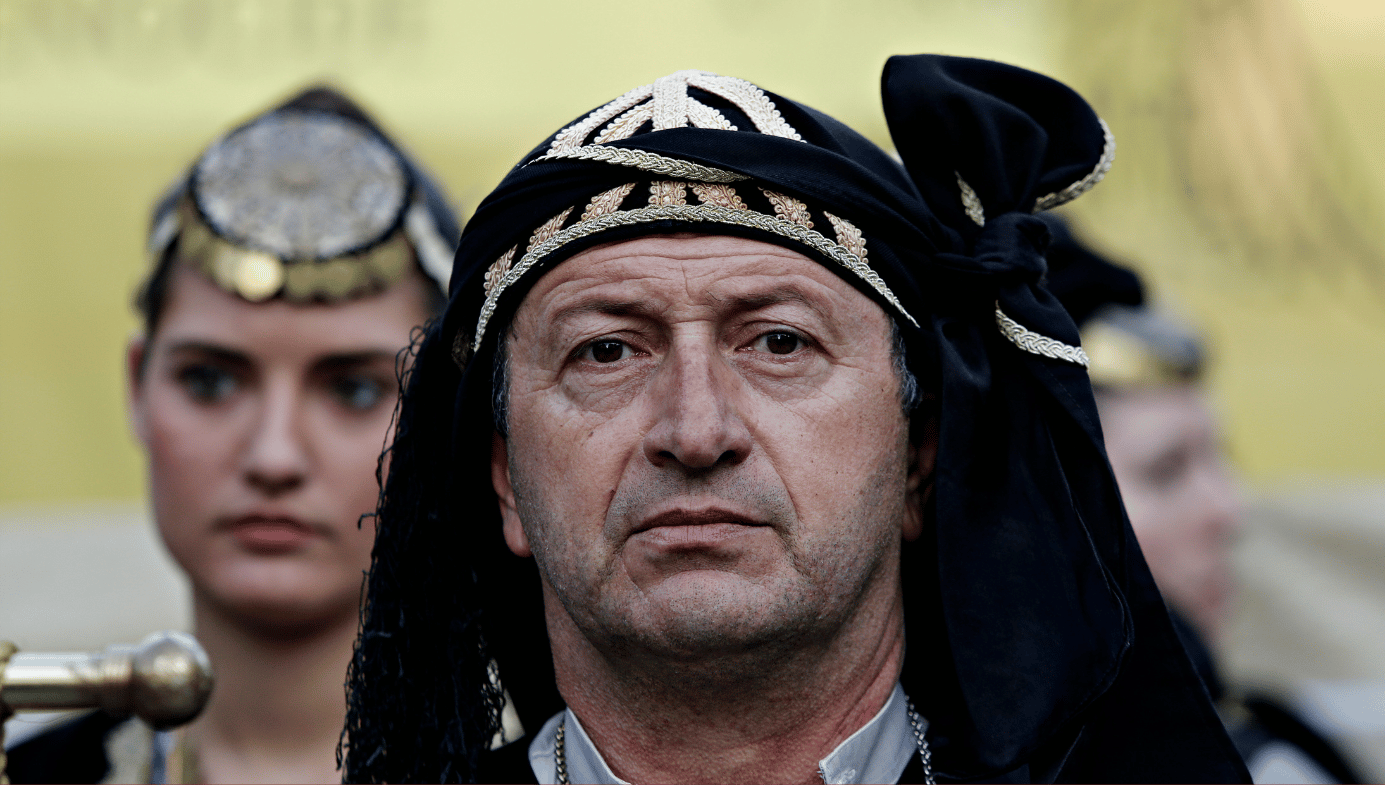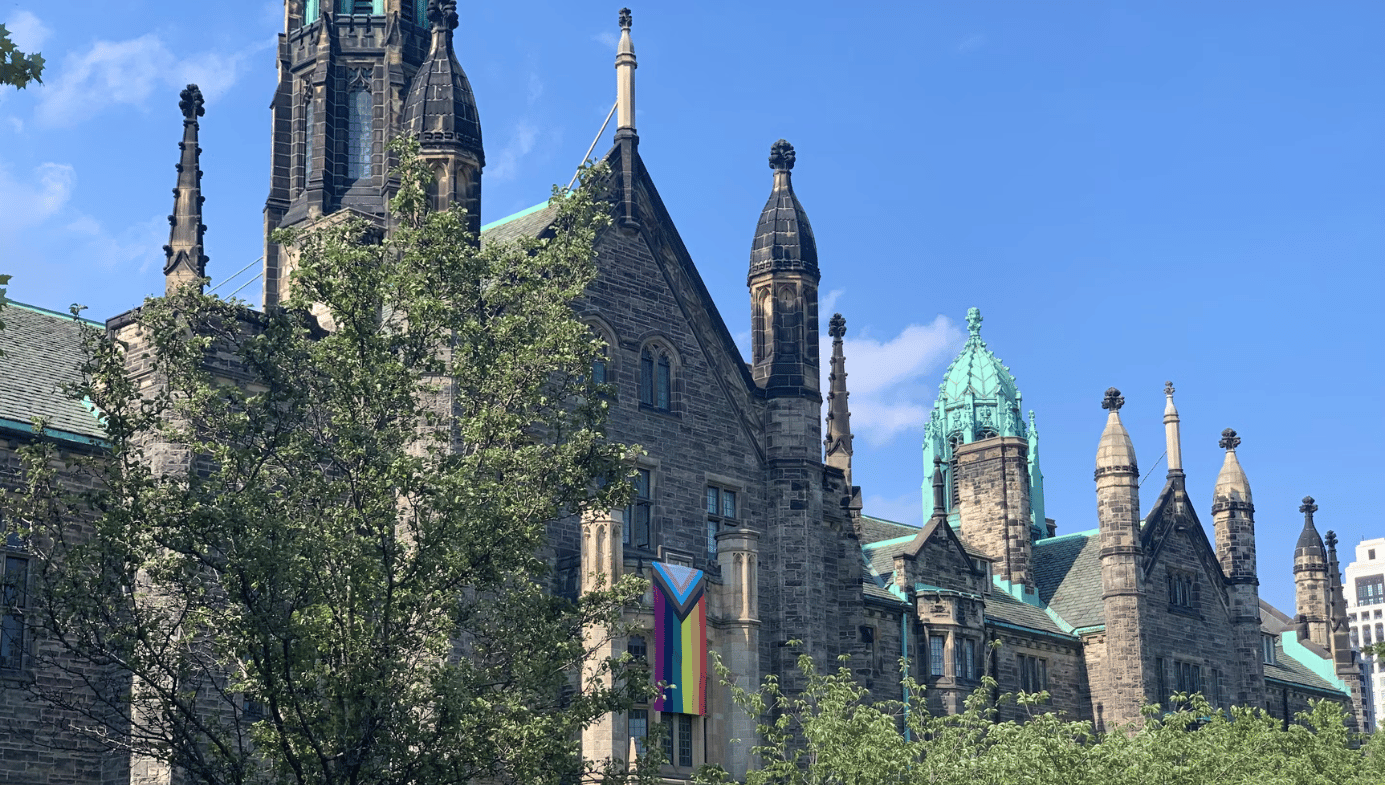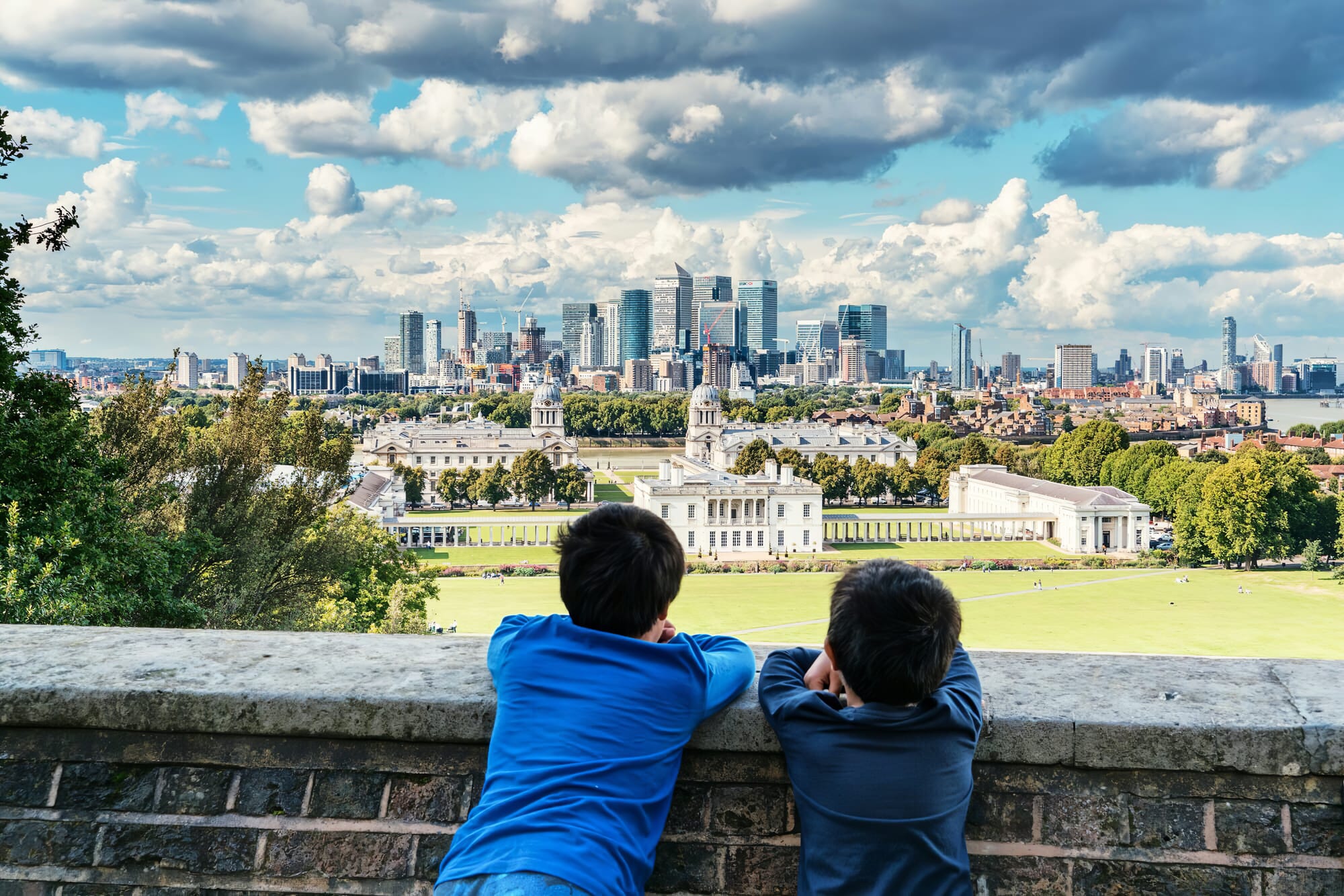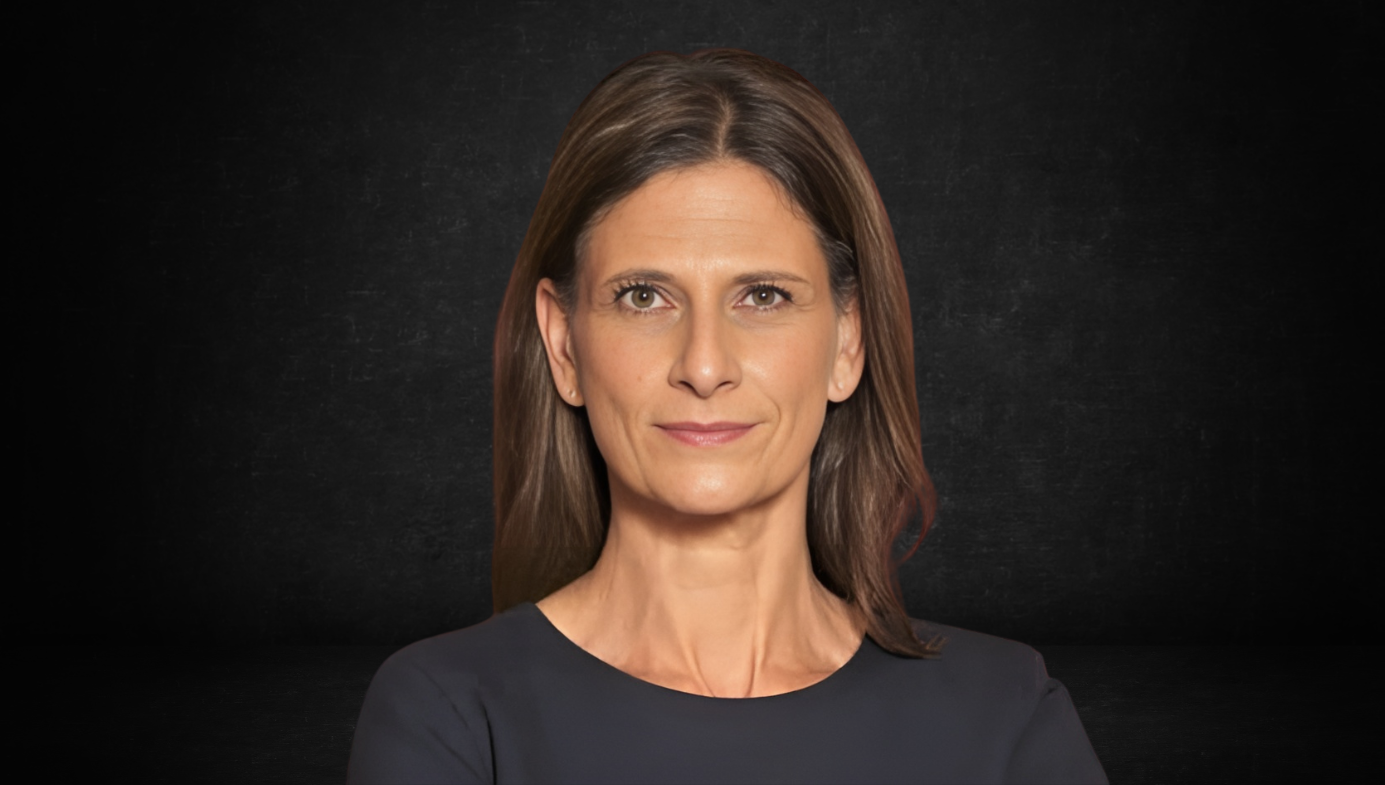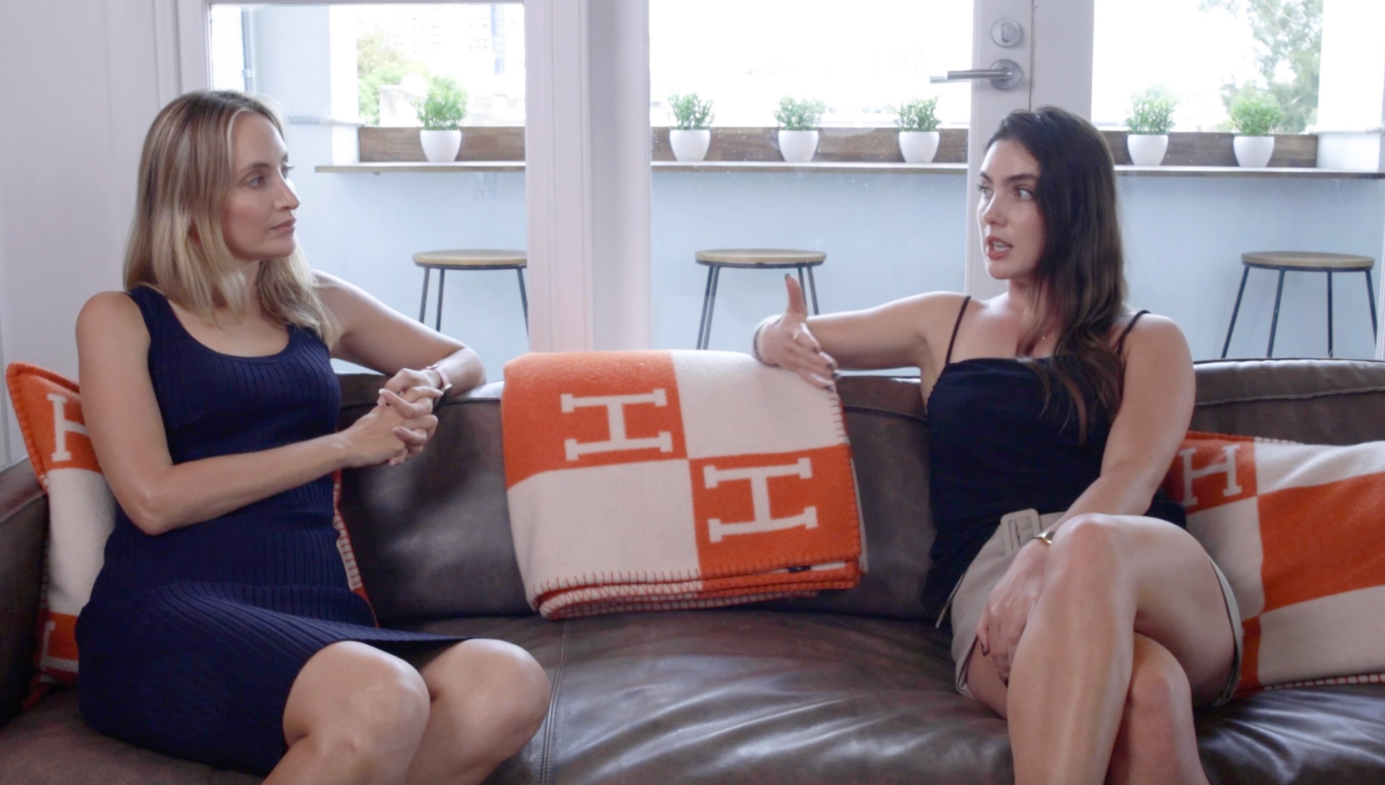Disney’s Institutional Capture
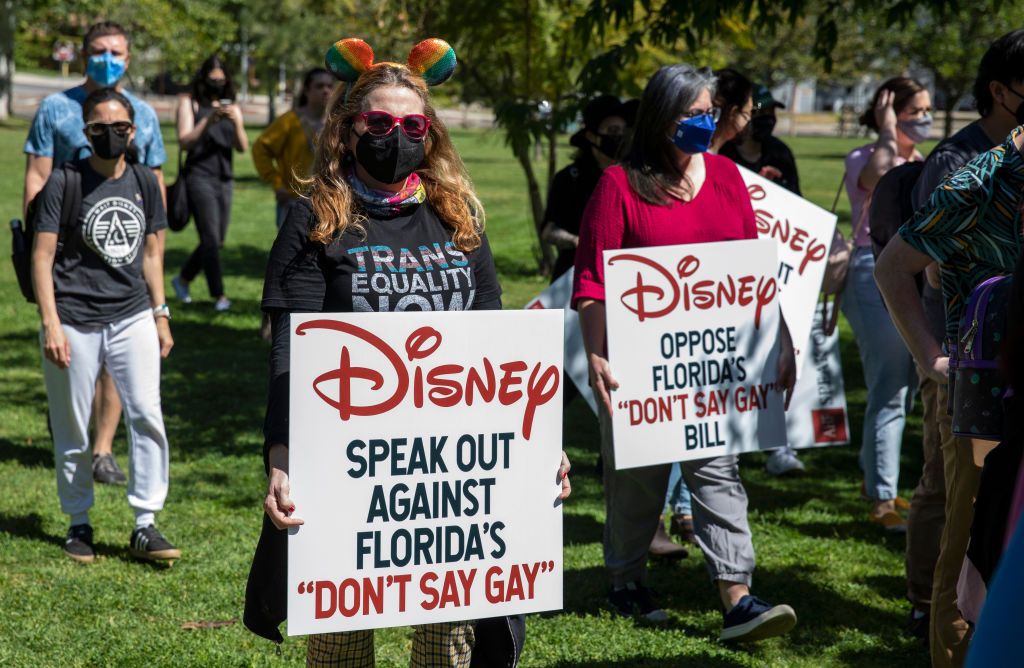
The declarations from Disney’s executive leadership have been agonizing and predictable, remarkable only for their robotic conformity. On March 11th, Disney’s CEO Bob Chapek released a statement which began like this:
To my fellow colleagues, but especially our LGBTQ+ community,
Thank you to all who have reached out to me sharing your pain, frustration and sadness over the company’s response to the Florida “Don’t Say Gay” bill. Speaking to you, reading your messages, and meeting with you have helped me better understand how painful our silence was. It is clear that this is not just an issue about a bill in Florida, but instead yet another challenge to basic human rights. You needed me to be a stronger ally in the fight for equal rights and I let you down. I am sorry.
In an internal video sent to Disney employees, Josh D’Amaro, Chairman of Disney Parks, Experiences, and Products, announced: “We hear you, we see you, and we value you. The legislation being considered in the state of Florida, and being considered in other states, it's concerning, and it's painful to our LGBTQ+ cast, allies, and many in our community.” In a company-wide email, Ken Potrock, president of Disneyland Resort, chimed in: “I, too, have heard from many of you about your disappointment in the company concerning this divisive and discriminatory legislation. Understandably, many of you feel betrayed, angry and even heartbroken. As an ally to the LGBTQ+ community, this breaks my heart and I want you to know that I hear you, I stand with you and I support you.” Latondra Newton, Senior Vice President and Chief Diversity Officer, declared, “I believe it is important to reaffirm our Disney values and our long-standing commitment to inclusion.”
These extravagant displays of humility and repentance were precipitated by the passage of Florida bill HB1557, the media blitzkrieg surrounding it, and especially, internal pressure from a small subset of Disney employees. These employees (“cast members,” in the language of the company) mostly work within the Diversity, Equity, and Inclusion (DEI) departments and LGBTQ+ BERGs (Business Employee Resource Groups). Florida’s bill—officially named “Parental Rights in Education” but deemed the “Don’t Say Gay” bill by its opponents—has become a flashpoint in the fraught nationwide debate about how much say parents ought to have in how and what their children are taught. The primary bone of contention is this key provision: “Classroom instruction by school personnel or third parties on sexual orientation or gender identity may not occur in kindergarten through grade 3 or in a manner that is not age appropriate or developmentally appropriate for students in accordance with state standards.”
Polling on volatile issues like this one can yield wildly different results depending on how the survey is conducted, but one conclusion is certain: the topic is extremely divisive. So how and why did Disney’s leadership—a company famous for family-friendly content which finds broad reception in nearly every country in the world—end up taking a side in such a heated political battleground? The merits of the law, its provisions, and its likely effects have been endlessly discussed elsewhere, so I won’t belabor those points here.
What I can offer is the perspective of a Disney insider.
I’m an Imagineer, a job that the company’s website describes as “the creative engine that designs and builds all Disney theme parks, resorts, attractions, and cruise ships worldwide, and oversees the creative aspects of Disney games, merchandise product development, and publishing businesses.” It’s an incredible job where I get to work with incredible people, and that’s what makes the current shift in the company culture so distressing.
If you roam the halls of the Imagineering department, you’ll encounter Mickey’s 10 Commandments, a distilling of storytelling wisdom that helps us stay on target when developing new projects.
- Know your audience—identify the prime audience of your attraction or show before you begin design.
- Wear your guests’ shoes—insist that your team members experience your creation just the way the guests do.
- Organize the flow of people and ideas—make sure there is a logic and sequence in your stories and in the way guests experience them.
- Create a wienie—create visual targets [wienies] that lead visitors clearly and logically through the experience you’ve built.
- Communicate with visual literacy—make good use of color, shape, form, texture—all the nonverbal ways of communication.
- Avoid overload; create turn-ons—resist the temptation to overload your audience with too much information and too many objects of interest.
- Tell one story at a time—stick to the storyline; good stories are clear, logical, and internally consistent.
- Avoid contradictions; maintain identity—details in design or content that contradict one another confuse the audience about story and time period.
- For every ounce of treatment, provide a ton of treat—you can educate people, but don’t tell them you’re doing it. Make it fun!
- Keep it up—everything has to work.
These Commandments are complemented by Disney’s “Four Keys.” Every new cast member has these four keys drilled into them from day one: Safety, Courtesy, Show, and Efficiency. For over six decades, the Four Keys and Mickey’s 10 Commandments guided storytelling and experience-making in the Disney parks. These guiding principles have been in place, with only minor alterations, for roughly 65 years—nearly as long as the parks themselves have existed. They have helped a talented and dedicated team of Disney cast members tell stories that appeal across demographic, geographic, ethnic, religious, and political lines.
But suddenly, this is all changing. The last couple years have brought COVID, lockdowns, the summer of 2020, and the doctrines of critical theory and its various permutations to the Disney corporation. Ibram X. Kendi was a featured speaker in the “Reimagine Tomorrow” series, an internal Disney effort to promote Diversity, Equity, and Inclusion (DEI) initiatives within the corporation. Employees stuck behind laptop screens at home joined BERGs and Slack channels, and used their ample spare time for internal political action. The DEI department within the company expanded by an astonishing 633 percent in 2019–21, at the same time that nearly every other department was contracting by 25–75 percent. Most surprising of all was the addition, in April 2021, of a FIFTH key—Inclusion—to the traditional Four Keys used in training. “Like The Four Keys before them,” announced Josh D’Amaro, “The 5 Keys—with Inclusion at the heart—will continue to guide us as we interact with guests, collaborate together, create the next generation of Disney products and experiences, and make critical decisions about the future of our business.”
The sexual revolution, the Civil Rights movement, the Vietnam War, the assassinations of JFK, RFK, MLK, and Malcom X, the Cold War, stagflation, the Stonewall Riots, Watergate, Roe v Wade, the space race, the Los Angeles riots, September 11th, Hurricane Katrina—every major event that took place in American society since Disneyland first opened its gates in 1955 rolled by and the Four Keys remained unaltered. And yet, in 2021, as the nation reopened from lockdowns in fits and starts, the Fifth Key of Inclusion was added. Why now? Why at all?
The short answer is institutional capture, a term that once belonged to economic theory as regulatory capture. In economics, this is a form of corruption that occurs when a political entity, policymaker, or regulator is co-opted to serve a particular constituency and its interests. In business institutions, the process is much the same, only the goal is not to change a regulatory policy, but to turn the business itself into a mouthpiece for an ideology. Disney has been rotting from the inside for quite some time, but the speed with which its public transformation took place is truly breathtaking. Florida was the final straw.
During the month of February, much of the media’s reporting about the bill was heavily negative. Vanity Fair flatly described it as “bigoted,” “dangerously anti-LGBTQ+ and hugely harmful to the young people it’s supposedly trying to protect.” This kind rhetoric continued to appear in the press for weeks, and was rapidly adopted by Democratic politicians, late night comedians, and social media influencers as their cause célèbre. Pressure began to build from activists within the company for Disney to take a public line and denounce the legislation, as a number of other companies had done.
On March 2nd, Josh D’Amaro recorded the first company-wide communication on the matter—a video in which he spoke about “a space for all,” “inclusion for all,” “voices heard,” and the “need to talk freely.”
On March 7th, Disney CEO Bob Chapek sent out a company-wide email, in which he said that he had “met with a small group of Disney LGBTQ+ leaders to discuss controversial legislation pending in Florida.” He revealed that a “common theme was disappointment that the company has not issued a public statement condemning the legislation,” but maintained that “corporate statements do very little to change outcomes or minds.” Instead, he suggested that “the best way for our company to bring about lasting change is through the inspiring content we produce, the welcoming culture we create, and the diverse community organizations we support.” This boilerplate corporate-speak was basically intended to say, “Yes, we’re on your side, but no, we’re not going to put ourselves in the middle of a political debate.”
On March 8th, the bill was passed by the Florida legislature, and a flurry of rumors emerged about more meetings and demands from Disney’s DEI department.
On March 9th, during the company’s annual shareholder’s meeting, Chapek announced that he would be meeting directly with Florida’s governor to oppose the bill. “I understand our original approach, no matter how well intended, didn't quite get the job done,” he said.
On March 11th, we received another company-wide email. “Thank you to all who have reached out to me sharing your pain, frustration and sadness over the company’s response to the Florida ‘Don’t Say Gay’ bill.” Gone were the careful references to “controversial legislation.” He continued, “It is clear that this is not just an issue about a bill in Florida, but instead yet another challenge to basic human rights. You needed me to be a stronger ally in the fight for equal rights and I let you down. I am sorry.”
In less than two weeks’ time, the company had moved from principled neutrality to open advocacy. This new messaging, intended to mollify the company’s internal critics, accelerated Disney’s meltdown instead. “Brave Space Conversations” are now held at regular intervals—an absurd euphemism for struggle sessions designed to allow activists to vent their frustrations while drowning out dissenting voices. All regularly scheduled company meetings are cancelled to make room for these meetings, and park leadership opens the floor to hours-long performative recitations of grievances by hand-picked cast members. They conclude with grandiose statements about inclusion and fairness and understanding pain and listening, but not a single nonconforming viewpoint is heard, either from those who support the bill or those who think Disney has no business getting involved in this dispute in the first place.
“At Disney,” the company’s website promises, “inclusion is for everyone. We reimagine tomorrow as our way of amplifying underrepresented voices and untold stories as well as championing the importance of accurate representation in media and entertainment.” But, as usual, “inclusion” only protects those who think like DEI activists. “Fairness” only applies to historically oppressed people groups. The only pain worth understanding is that felt by the subsection of LGBT cast members who believe that sex education ought to begin in kindergarten. Listening and seeing is restricted to the approved narratives, and even excludes those LGBT cast members who support the Florida legislation. I know many of them personally, and nearly without exception, they are all parents.
It’s incredible that a company—particularly a company whose brand is family-friendly content—would oppose the perfectly reasonable view that sexual topics are not appropriate for six-year-olds in a public school setting. The bill puts the onus back on parents, rather than public schools, to decide how and if these conversations happen. That perspective can be debated, but it is not wrong a priori, and a very large number of Florida voters agree with it. But Disney isn’t interested in allowing a genuine debate or conversation to occur, it simply wants to satisfy the DEI activists so they stop making trouble and bad headlines for the company. The result is that they parrot the party line, offer craven apologies, and ignore and silence opposition.
Chapek’s March 11th email contained these ominous words: “Starting immediately, we are increasing our support for advocacy groups to combat similar legislation in other states. We are hard at work creating a new framework for our political giving that will ensure our advocacy better reflects our values.” In other words, the DEI takeover at Disney has been so thorough that, in future, the citizens of this country will see one of its largest and most powerful corporations throw its financial and political support behind progressive political causes. We’ve already seen this in Texas, where Disney pledged, during an internal Reimagine Tomorrow session, to oppose a law criminalizing transgender surgeries and hormone treatments for children.
On March 28th, when Florida Governor, Ron DeSantis, finally signed the bill into law, the Disney Company issued this statement:
Statement from The Walt Disney Company on signing of Florida legislation: pic.twitter.com/UVI7Ko3aKS
— Walt Disney Company (@WaltDisneyCo) March 28, 2022
Just as once-venerable organizations like the ACLU have meekly surrendered to capture, Disney has allowed itself to become just another domino as DEI ideology continues its long march through the institutions.
So, what do real Disney Parks and Resorts employees think of this legislation and other initiatives like it? Well, it depends on who you ask. Younger cast members, particularly those in daily ops who don’t have families, mostly intone the party line that Florida’s law is anti-LGBT and represents some kind of effort to “erase” that community.
Older cast members with families, particularly those in salaried management and creative roles favor parental rights and tend to support the legislation. What I have found most interesting about my conversations with this group is that their perceptions depend significantly on how the question is asked. If I offer a generic “What do you think of the legislation in Florida Bob [Chapek] keeps emailing about?” many are quick to condemn it. But if I ask, “What do you think of the law preventing teaching sexual topics in K-3 grade?” many say they support it. Within the Imagineering department, the creative groups tend to be against the law and in favor of Disney efforts to subvert it. The groups working in engineering and construction tend to support the law, but mostly they just want Disney to shut up about politics.
The executive group is perhaps most revealing. The majority of executives, as one would expect, not only toe the party line, but are extremely vocal in their endorsement, frequently initiating conversations about the bill as they anxiously scan the room for nods of approval. But others fall silent during company-wide calls and study their company phones whenever the topic comes up. I’ve only managed a few private conversations with these people, and the story is consistently the same: keep your mouth shut or find yourself the target of scrutiny and likely termination.
This evidence is anecdotal, of course, and hardly scientific. However, when the walkout finally occurred on March 19th, only a handful of Disney’s 80,000 theme park workers turned up to protest. As the New York Times reported:
Some Disney artists posted support on Twitter, where the hashtag #DisneySayGay was prominent midmorning. Sixty to 70 Disney employees briefly walked in a loop around Walt Disney Studios in Burbank. Down the street at the Bette Davis Picnic Area, a smattering of Disney employees gathered in protest, although they seemed outnumbered, at least at one point, by members of the news media.
I received a number of “out of office” email replies that day, declaring that my co-worker would be taking the day off in protest of the bill, only to see the same co-worker in a Zoom meeting five minutes later. They were invariably on time and had material ready to present, just like on any other day.
Pronouncements from the company declare that “the employees of Disney believe” such-and-such, but nobody appears to have bothered to ask the employees themselves. The Disney parks division is an incredibly diverse melting pot of physical, philosophical, religious, and political variations. We largely mirror the surrounding cultures of Southern California and Florida, but with a decided lean toward more conservative tendencies. It turns out that businesses which brand themselves as family-friendly tend to draw employees who like family-friendly content.
For a company that claims to listen to the voices of their cast members, the Disney corporation has spent the last couple years ignoring vast swathes of its own workforce. In recent months, they have gone further, actively supporting one group while actively suppressing or simply ignoring the other. We have changed our core ethos, and our storytelling has suffered under the litmus tests required by DEI requirements. I have been personally involved in no less than five projects that had their creative visions dimmed by the dictates of profoundly uncreative DEI functionaries: Replace that Christmas song, it’s too Christian. Don’t “culturally appropriate” that visual design, we don’t have a member of that ethnicity on the project team. Send this script to a “sensitivity reader,” the voice is too male. Remove “ladies and gentleman, boys and girls” from all park announcements, it reinforces the gender binary.
Time will tell whether or not Imagineering, and the Disney brand overall, can survive this internal revolution. But current trends are not encouraging. Some of us throw sand in the gears of the DEI machine when we can and produce the same exceptional experiences we always have. The capture is thorough, but Disney has survived periods of darkness before. I encourage everyone to ignore the bloviating of Disney executive leadership, from CEO Bob Chapek all the way down to park VPs. These people are not thought-leaders or cultural revolutionaries. They are cowards held hostage by the prevailing narrative, and they will run in whichever direction that narrative dictates. They do not represent the members of the Disney parks and resorts division. We are as diverse as the country itself, and the company’s attempts to use us as a bloc to push their political agenda is intolerant, exploitative, and profoundly un-Disney.



